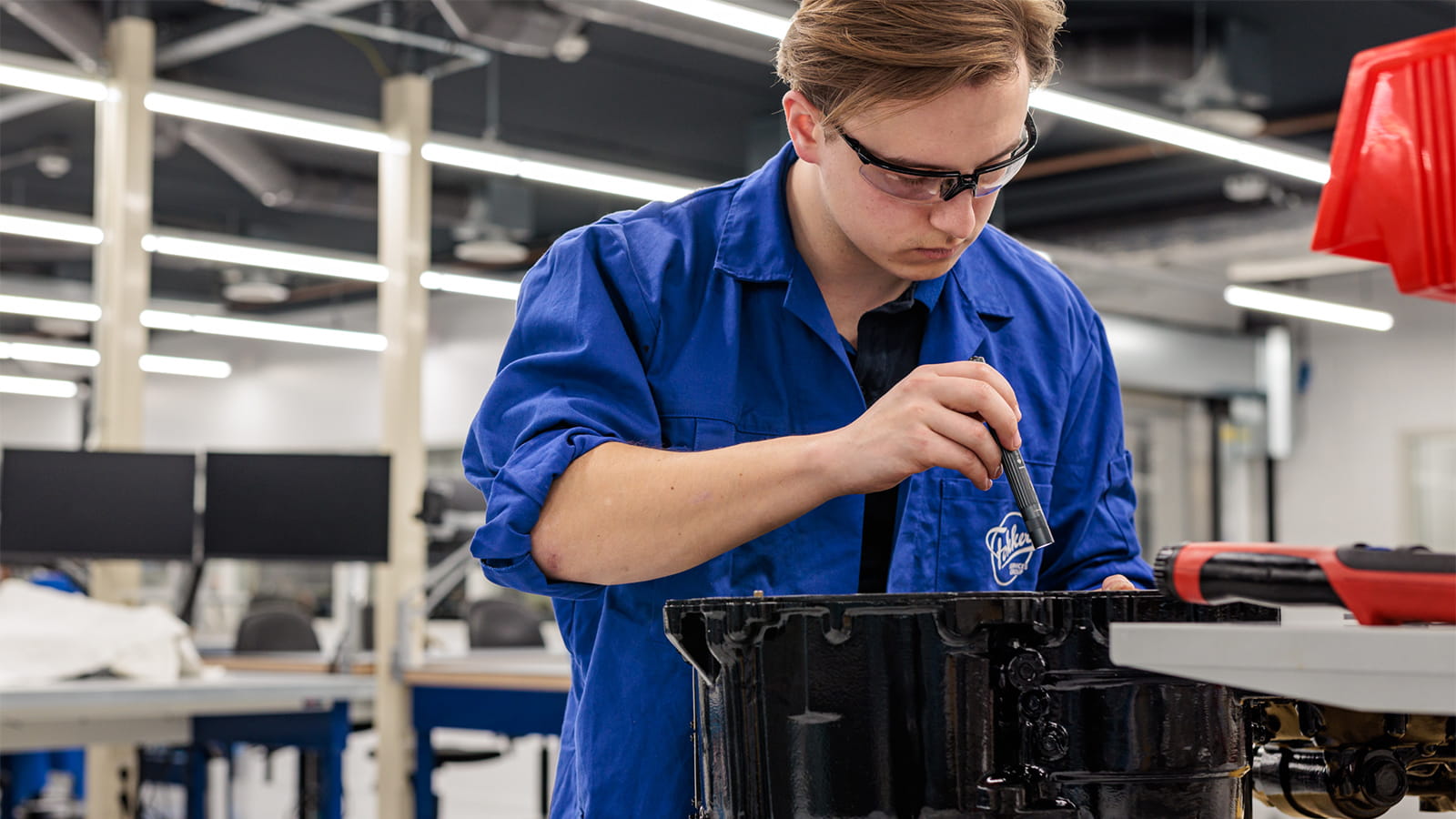Hybrid-Electric Propulsion--A Great Start to Reducing Aviation’s Carbon Footprint
Tim White
President, Power & Controls
(Published in Regional International/ERA magazine, March 2020)
I love the aviation industry. It connects people safely, transports goods efficiently, and is a powerful engine for global commerce. The aviation industry has always been at the forefront of technological innovation and leadership. The world is now looking to us to develop enduring solutions that will address carbon emissions and environmental impact.
The aviation industry knows it has a growing challenge—the need to reduce its carbon footprint faster. Over the years aerospace has made great strides in aircraft efficiency, operations and the production environment, but significantly more needs to be done. The data is incontrovertible. If you consider the world’s human-generated carbon dioxide emissions, as well as CO2 emissions from all transportation sources, 2-3 percent of the former and 12 percent of the latter are generated by the aviation industry. As the most recent example of just how seriously the industry is taking this issue, in February, Delta Airlines announced it would commit $1 billion to become the first-carbon-neutral airline globally.
So here are a few important questions that get to the crux of the challenge. How does our industry reduce its carbon footprint while ensuring the technological advance and economic viability of one of the world’s great industries? How can aviation be a force for sustainability and continue to be a source of economic vitality? The challenges posed by these questions are worthy of thoughtful consideration.
Many within the aviation industry are convinced that the answer lies in electric propulsion. The difficulty—and it is huge—is that energy storage (battery technology) needs to advance. Today, we have two serious challenges to electric propulsion.
Energy and Power Density
Weight is not an aircraft’s friend. If we installed today’s electric batteries that could power a commercial air transport aircraft, the aircraft would be so heavy, that it would be aerodynamically, operationally and economically unfeasible. Even smaller, regional electric aircraft would have a range of less than 500 nautical miles. And, again, it would be economically unsustainable.
The reason is a function of the ability to store energy (expressed as energy density in kilowatt-hours per kilogram), and the ability to convert that energy into power (expressed as power density in kilowatts per kilogram). The task ahead of us is evident when you consider that jet fuel has 50 times the energy density of today’s batteries, and a typical jet engine has three times the power density of today’s electric engines. Further, as a traditional aircraft burns fuel, the aircraft gets lighter.
It should be noted—at least parenthetically—that jet fuel is much cleaner and more efficient than in previous generations, and innovation should ensure that it’s even less polluting in the future. But fuel still pollutes.
Bottom line, an all-electric transcontinental aircraft will need orders of magnitude improvement in energy and power density and isn’t expected to be viable anytime soon.
Power Management
In addition to generating more power, we also need to be able to control, protect and manage the power and thermal environment. Managing significant amounts of electrical power at high altitudes is not easy to do and real expertise is needed.
Highly efficient power distribution and conversion is required to maximize the use of available power and minimize the thermal management system. High voltage systems will be required for commercial aircraft. However, isolating high voltage at high altitudes is challenging. Additional spacing and insulation systems are required, and that impacts weight. Also the safe use and management of electricity on an aircraft—the system design—is critically important and another crucial challenge.
Because of the significant technological challenges to delivering a commercial air transport aircraft with electric propulsion, we believe that the best way to lower the aviation industry’s carbon footprint is to begin with hybrid-electric propulsion.
This is technologically feasible, and, if smartly planned, will ensure corporate viability and growing job opportunities. Hybrid-electric propulsion for smaller aircraft is the place to start.
- We believe that to power a regional, hybrid-electric aircraft with usable range and less than 50 passengers, the energy and power density of current batteries will need to double. We believe there is a path to achieve this in the next few years, and that a hybrid-electric passenger aircraft with 50 passengers or fewer and a range of less than 500 miles will be certified within the next 10 to 15 years.
- Looking further ahead, to make a single-aisle, 100-seat hybrid-electric aircraft viable will require that densities double yet again. This capability is probably at least an additional 10 years beyond the regional case. This is a 4x density improvement over 15 years.
The challenge is obvious when you consider that it took us 30 years to improve the power density from a 1980’s-era, large commercial air transport aircraft by 50 percent.
The aviation industry is ahead of the technology curve with regard to commercial hybrid-electric propulsion, and this is a big reason why Boeing, Airbus, Collins Aerospace and others are investing now in the R&D necessary to make commercial aircraft hybrid-electric and electric propulsion a reality. If you’re behind the curve in a high-tech industry like aerospace and defense, it’s difficult to catch up. If you try to time the curve—if you try to stay on the curve—that’s not leadership and it won’t deliver innovation. As an industry, it’s crucial that we stay ahead of the curve.
The challenges presented above should not be seen as arguments for delaying work on both commercial hybrid-electric and electric propulsion. In fact, the strongest argument for proceeding rapidly is this: The results for OEMs, airlines, passengers and our environment will be worth it.
Internal United Technologies Corporation studies indicate that commercial hybrid-electric and electric propulsion could:
- Reduce aircraft noise up to 85 percent *
- Improve fuel consumption up to 40 percent **
- Reduce carbon dioxide emissions by more than 20 percent **
- Reduce airline operating and maintenance costs up to 20 percent ***
*Electric propulsion **Hybrid propulsion ***Electric and hybrid-electric propulsion
In April 2019, Collins Aerospace confirmed its commitment to hybrid-electric and electric propulsion technology by introducing The Grid: a 25,000-square-foot, next-generation, electric systems integration facility in Rockford, Illinois. The Grid will be the aviation industry’s most advanced electric power systems lab, and will be the test platform for the development of new products and systems for electric aircraft.
At The Grid, Collins will test high-powered generators, distribution systems, and motors, as well as install and test connected systems, such as actuation, air management and turbo machinery. The Grid will bring aircraft architecture integration testing to another level.
The $50 million investment in The Grid is part of a larger $150 million total investment that Collins Aerospace expects to make in electric systems over the next three years and builds on the $3 billion the company has invested over the past decade.
As Collins Aerospace builds out The Grid, a key focus is on sustainable building practices. So far, we have used:
- 4 million pounds of recycled concrete
- 500,000 pounds of recycled steel
- All-electric tractors to excavate and move soil
The Grid will also serve as the research and development home for key pieces of United Technologies’ Project 804, a regional-size, hybrid-electric demonstrator aircraft that we are supporting along with Pratt & Whitney. The demonstrator will consist of an engine optimized for cruise efficiency and augmented by a battery-powered electric motor. Project 804’s hybrid-electric propulsion system is expected to yield an average fuel savings of 30 percent.
In addition to its key focus on hybrid-electric propulsion, Project 804 is expected to advance other technologies as well, such as more power-dense electronics, lightly-hybridized larger engines, and hybrid supplemental power units.
As we think about the broader aviation industry, we have a unique opportunity to continue connecting the world and enabling global commerce while reducing emissions and our overall environmental footprint. Strategic investments in next-generation hybrid-electric and electric platforms are well worth it. It’s an exciting time for our industry.
####



